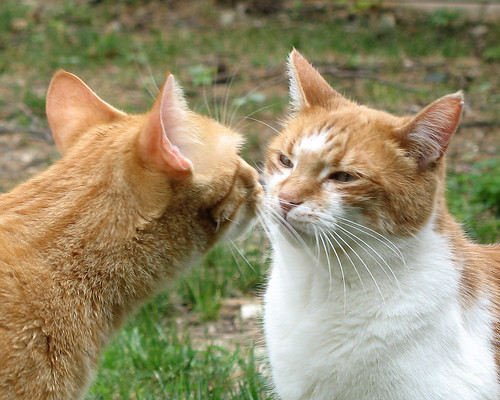
By Derek Rogers
Looking along the aisles of your local pet food store, you will find an enormous selection of so-called gourmet cat foods available. These foods usually claim to include exotic human-like ingredients, such as shrimp, lobster, filet mignon, prawns, and even rare Kobe beef from Japan. The question is whether or not these foods taste better and are better for your cat.
Cats and Their Food
Cats need a different type of diet than humans and dogs. While the latter can eat and digest animal and plant matter fairly easily, cats are considered obligate carnivores. This means they are physically better able to digest meat products than anything else.
Another reason for the meat-heavy diet is a need for taurine, an acid found in the flesh of animals. Cats need taurine in their diets because their bodies can't produce it. Without taurine, cats can end up losing their sight.
You might think that offering your cat any type of meat-based food would appeal to them but that's not always the case. Cats can be such picky eaters they will literally starve themselves if they don't want to eat what is being offered.
And that brings us back to the main question: Are gourmet cat foods tastier?
Does it Taste Better?
The truth is that there's no real way humans can determine what tastes better for their cat. Cats are unique creatures. They have their own preferences when it comes to food. No third party can really predict what any one cat will like anymore than someone who doesn't know you can guess your dietary preferences.
Gourmet cat foods can be appealing because of their variety of flavours. Cats do enjoy a variety of flavours and can become bored if they are fed even something scrumptious day after day. However, some cats like to keep it simple and are just as happy eating the cheap foods.
The only way to know for sure what tastes best is to ask your cat.
The Bigger Question
While cats may have their own preferences for food, you need to make sure the food they choose from provides them with all of the nutrients they need for a healthy diet. Gourmet foods may cost more to buy but that doesn't necessarily mean they will provide the best health benefits for your cat.
When you choose a cat food, you need to look at the list of ingredients carefully. Here are some pointers:
* First ingredient - On any cat food, the first ingredient should be some type of real meat or fish. You do not want "chicken meal," for example. If possible, the first handful of ingredients should all be real meat.
* Anything artificial - Most foods do need some types of preservatives to keep it from spoiling. However, the food should not include artificial flavours or colours.
* Filler ingredients - Cheap pet foods often contain a lot of filler, such as rice or grains, which doesn't do much for your pet's health but do help them cut their own production costs.
If you pay attention to labels using the pointers above, you'll be able to find the tastiest and the healthiest food for your cat.
Derek Rogers is a freelance writer who represents a number of UK businesses. For information on gourmet cat foods, he recommends Seapets, one of the UK's leading suppliers of cat foods.
Article Source: http://EzineArticles.com/?expert=Derek_Rogers





